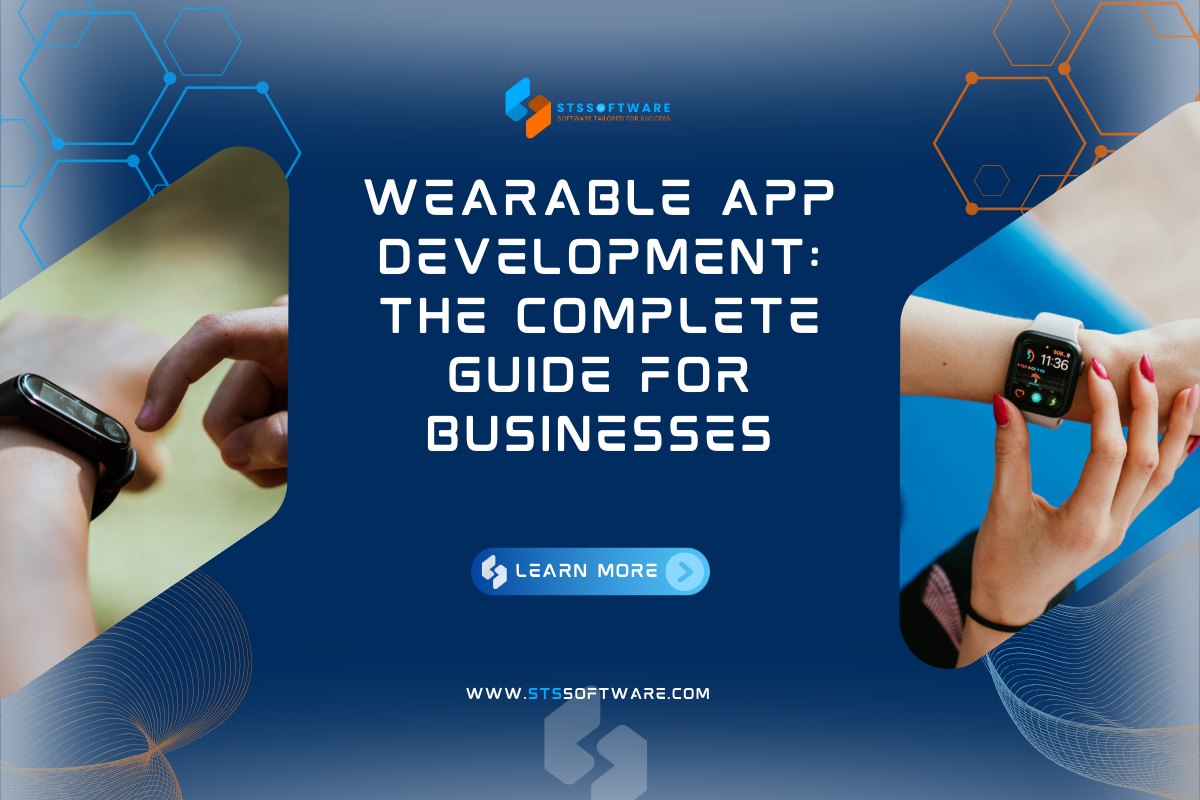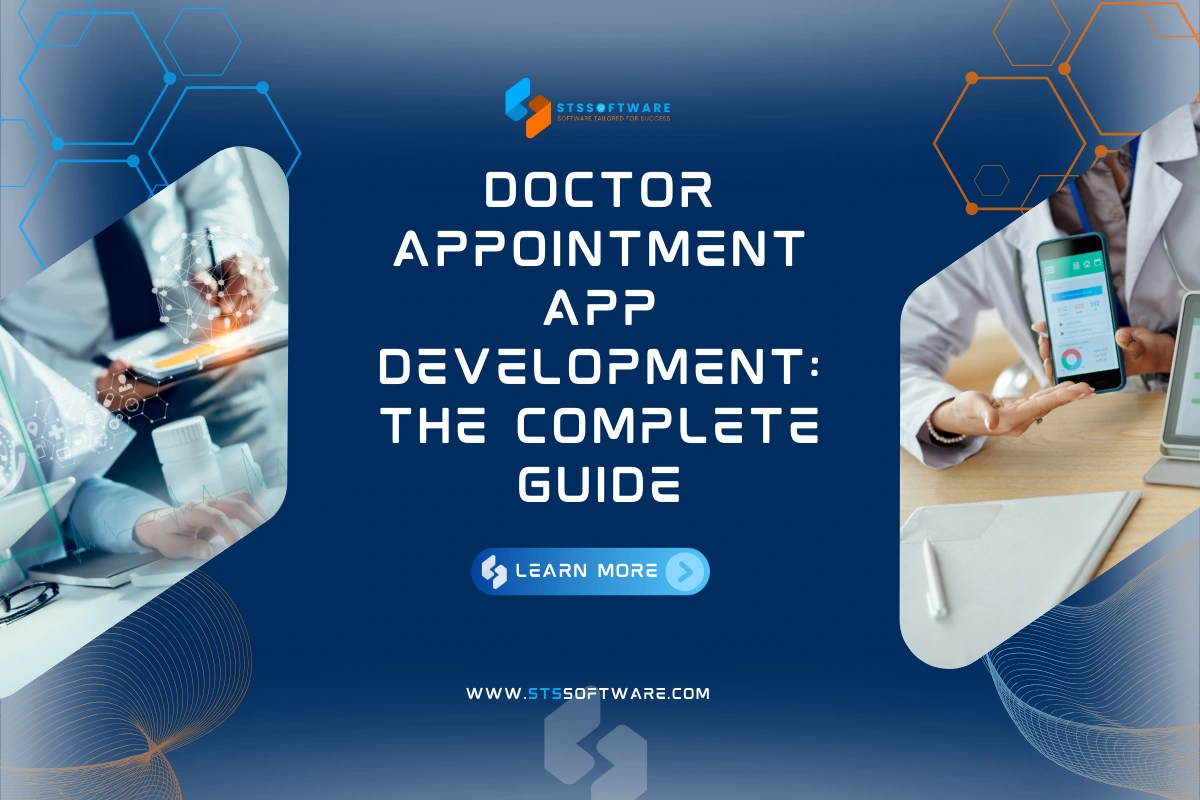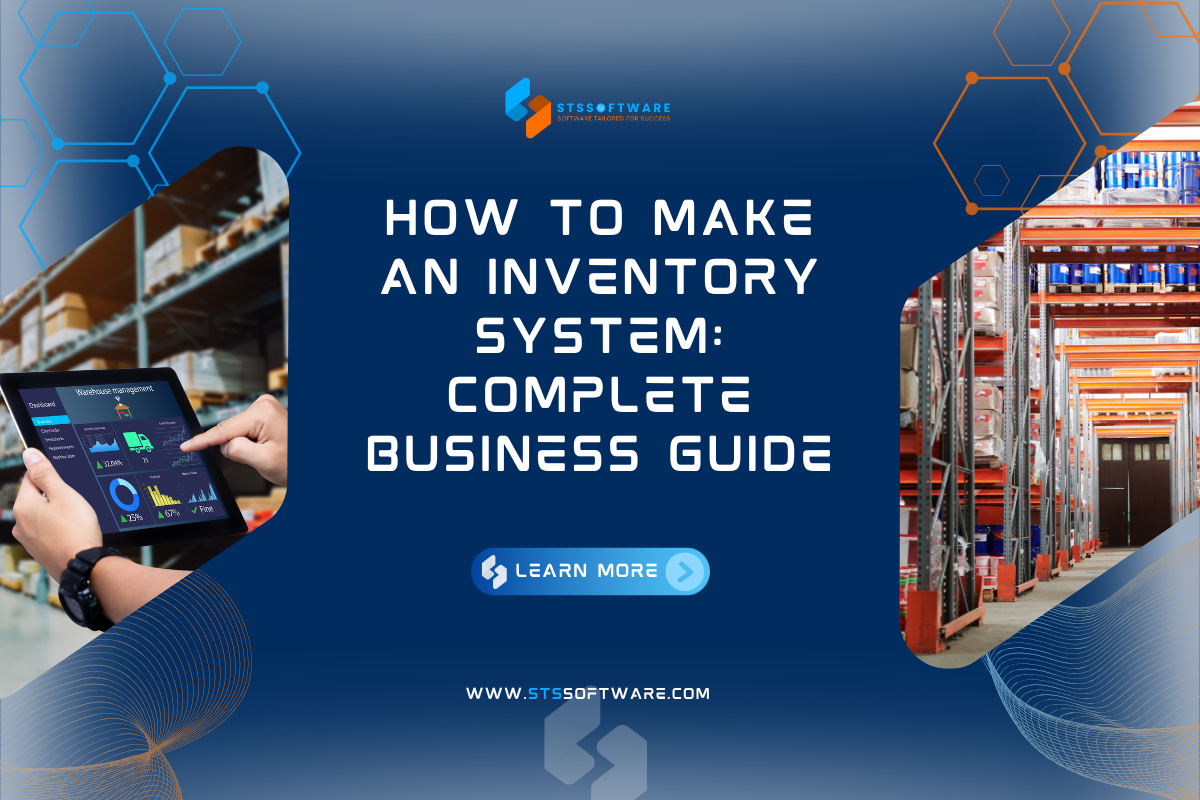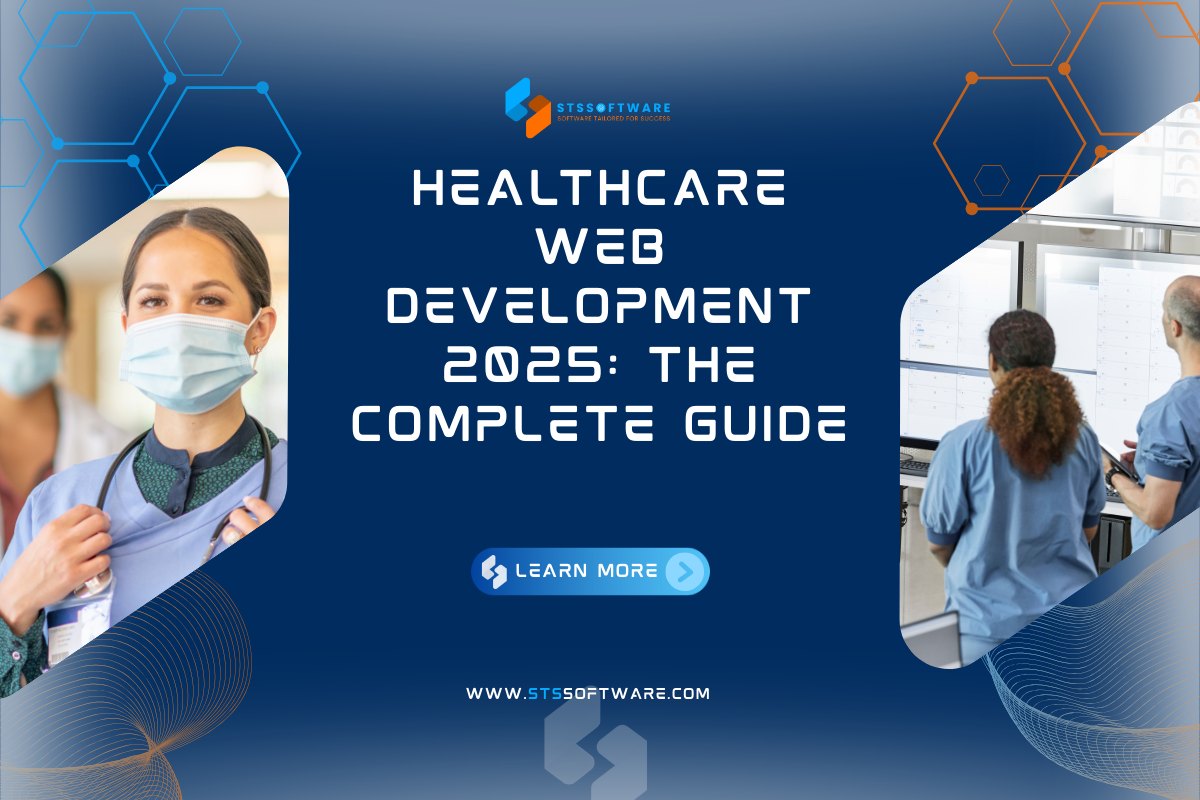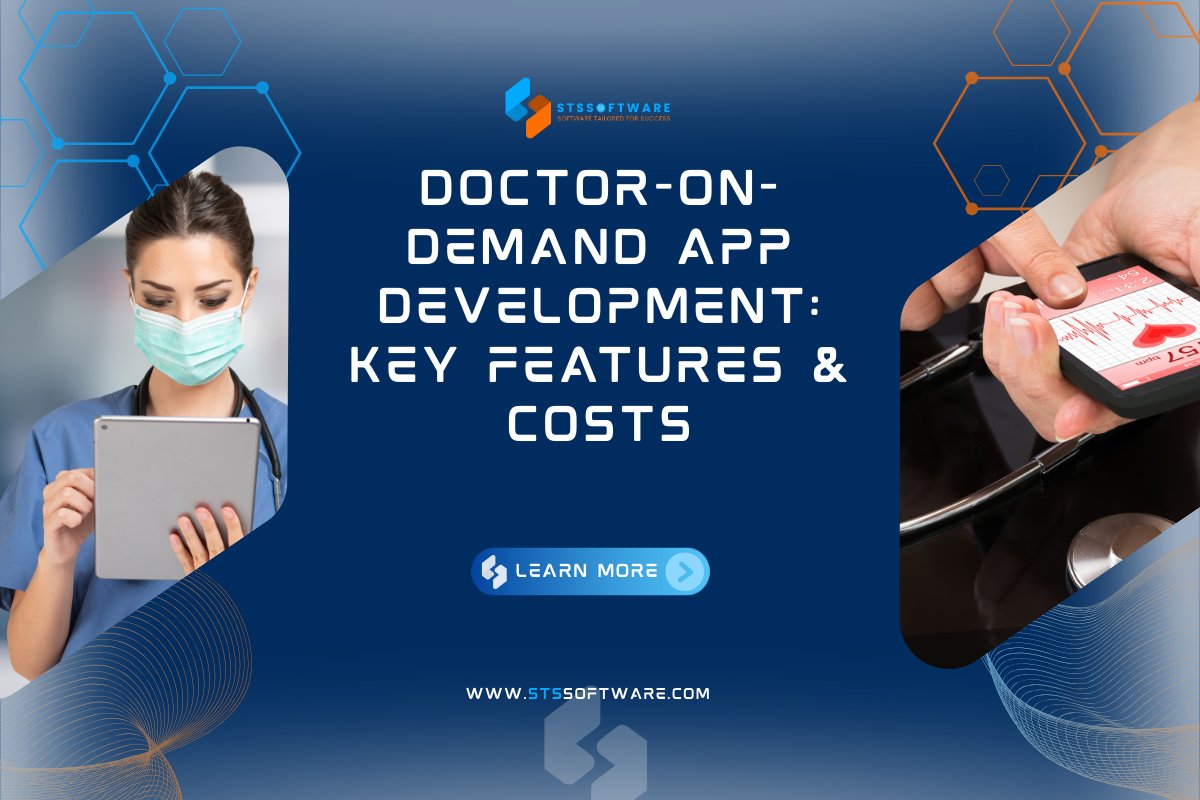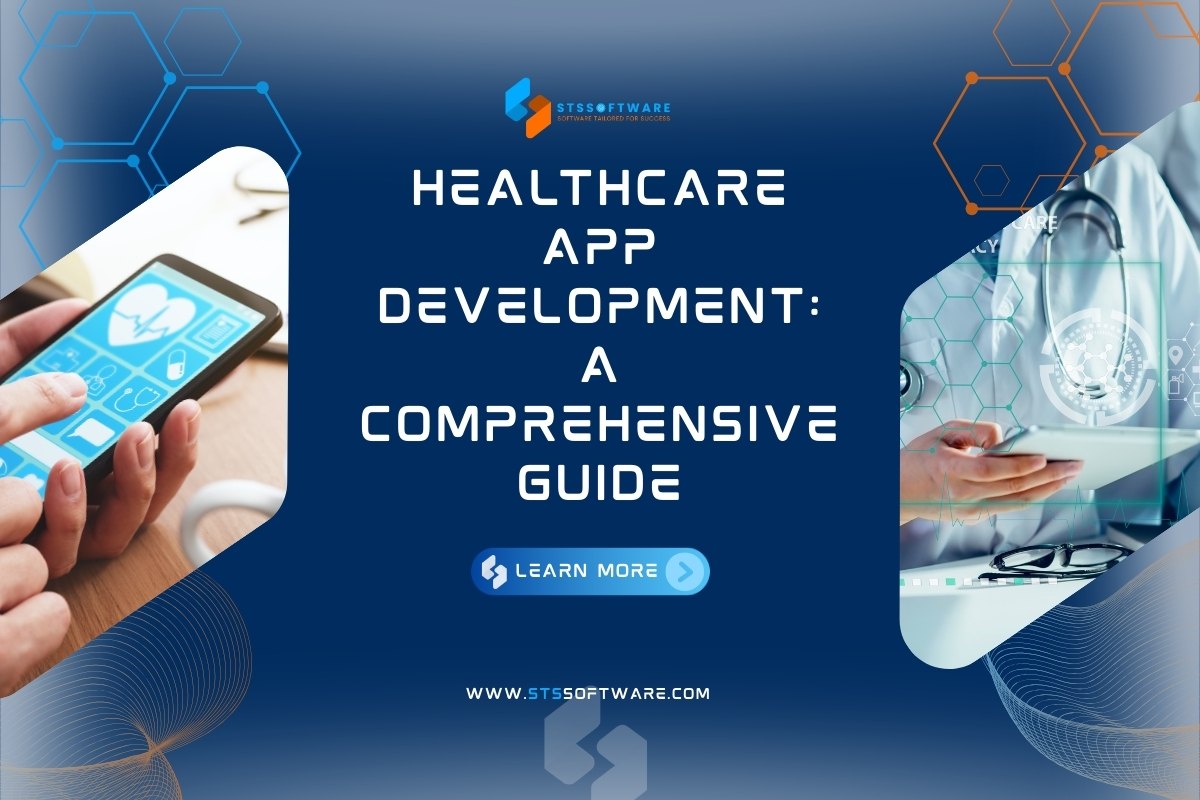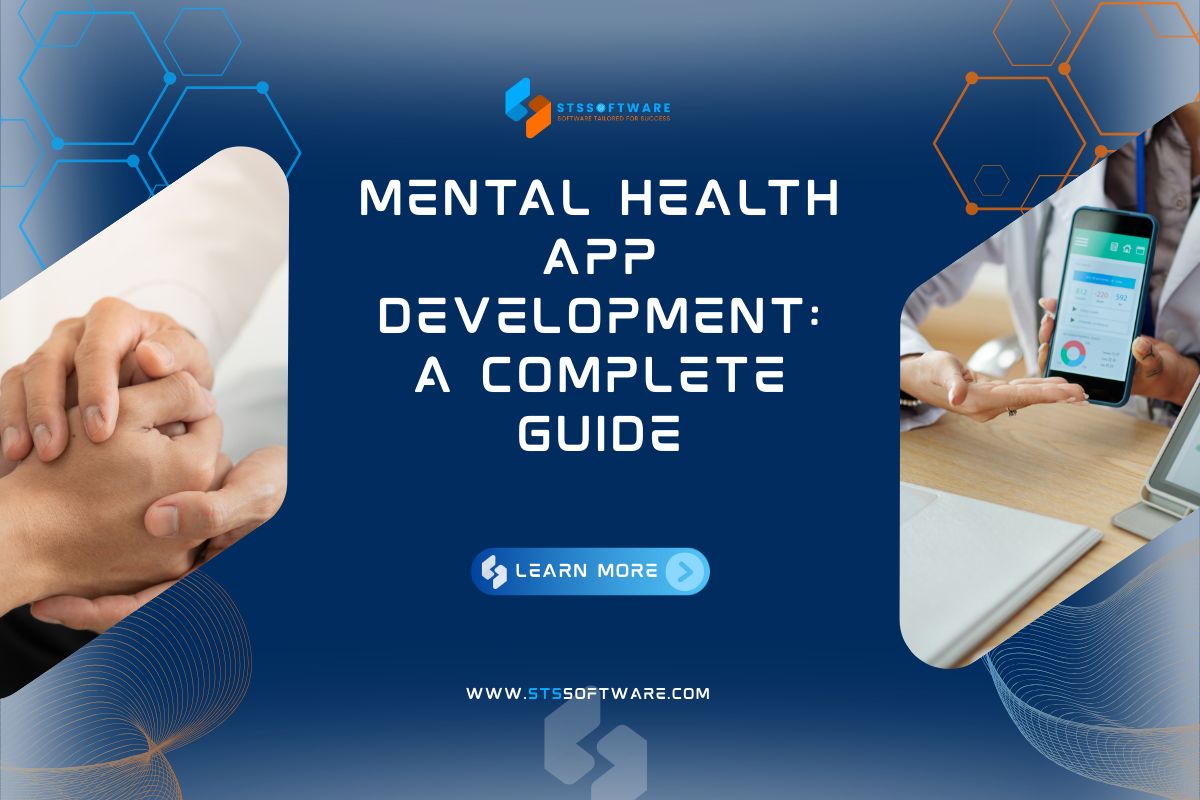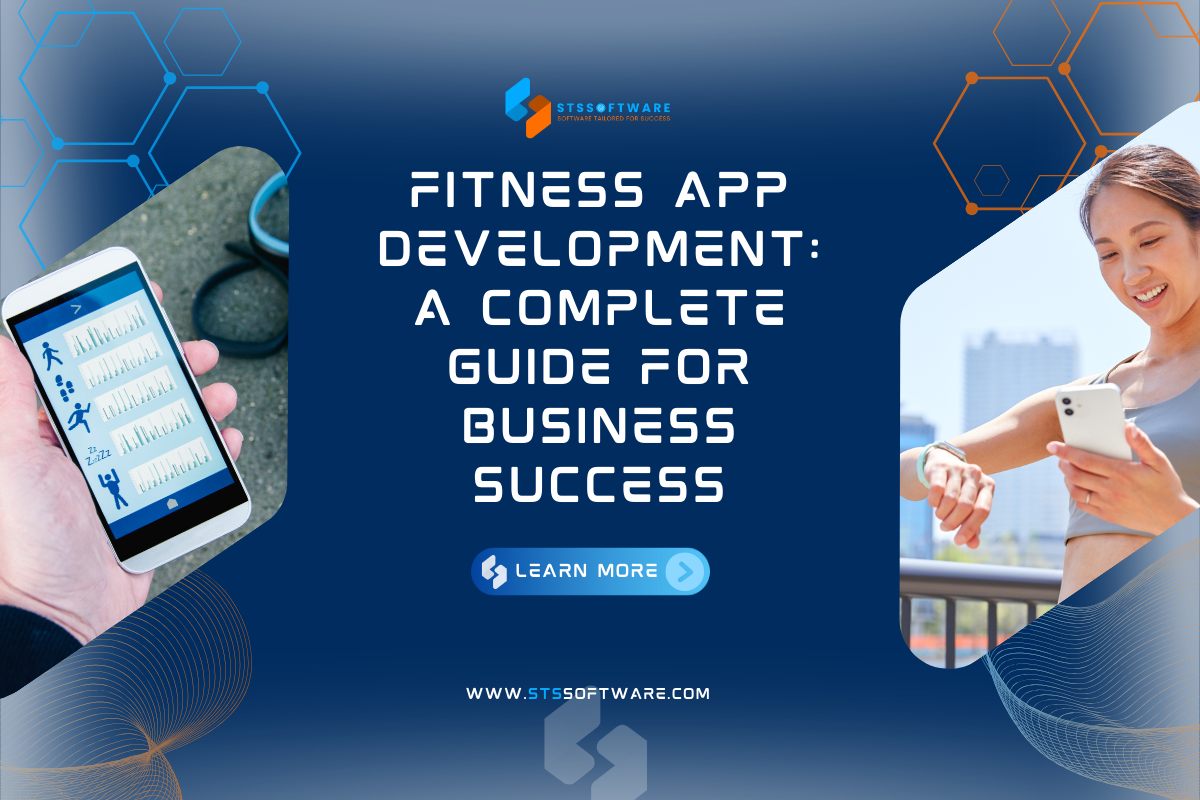Wearable application development refers to the creation of systems for devices like smartwatches, fitness bands, VR glasses, and medical sensors. These applications help users monitor their health, receive notifications, interact quickly, or support more effective sports training.
Currently, the wearable device app development market is growing rapidly. According to a Statista report, the market is expected to reach USD 70.30 billion in 2024 and grow to USD 152.82 billion by 2029. The increased demand is being fueled by users’ interest in health and the convenience aided by technology.
Popular platforms for wearable app development include:
- watchOS (Apple Watch)
- Wear OS (Android devices like Samsung Galaxy Watch)
- Fitbit OS (sports devices)
- Garmin SDK (specialized sports watches)
Therefore, the creation of apps meant for wearable devices needs extremely close attention to the operation of the hardware, limitations of the displays, and user needs in real-time. This is a great area full of promise, and opportunities for innovation will become apparent soon.
In this article, join STS Software in taking a deeper look at the development process, essential features, and how to create an optimal wearable experience.
Types of Wearable Applications
In the field of wearable app development, there are many types of applications designed to suit each specific usage need. Let’s explore the most popular types of applications in this part.
- Smartwatch applications: This is the most popular group in wearable device app development. Applications can support calling, texting, alarms, calendar reminders, and health tracking. For example, Apple Watch integrates Siri, heart rate measurement, and quick notifications from the phone.
- Fitness and health tracking apps: Healthcare wearable apps allow tracking of heart rate, sleep, calories, and activity levels. Fitbit and Garmin are two typical brands in this group. They help users adjust their lifestyle more scientifically.
- Smart glasses and AR wearable apps: Augmented reality applications help display information directly in the field of vision. Google Glass has been used in healthcare and logistics to display data without touching.
- Industrial/enterprise wearable solutions: In the enterprise environment, wearables help optimize workflows. For example, factory workers can use smartwatches to receive real-time instructions or check machinery systems.
- Smart clothing and specialized use cases: Some wearables are integrated into clothing to monitor heart rate, posture, or body temperature. In professional sports, they help coaches analyze athlete performance.
These types of applications show the great potential of wearable app development to improve efficiency, health, and user experience in many different fields.
Technical Considerations for Wearable App Development
To succeed in wearable app development, businesses need to pay attention to many specific technical factors. Wearable devices have their own configuration and operating environment, requiring suitable software solutions from the beginning.
Development requirements for each platform
Each platform, such as WearOS (Android), watchOS (Apple) or Tizen (Samsung) has its own SDK and rules. Understanding each operating system helps optimize performance and user experience. In Android wearable app development, programmers need to understand Android Studio, and at the same time comply with the Material Design interface.
Hardware limitations and optimization
Also, wearable devices often have low RAM and storage capacity. Therefore, the application needs to run lightly, using few resources. Data compression, loading content on demand, or turning off unnecessary background functions are common ways to optimize wearable device app development.
Connect and synchronize data
Besides that, the application needs to synchronize with the phone or cloud via Bluetooth, Wi-Fi or LTE. Poor connectivity disrupts the experience. Developers need to build a mechanism to handle lost connections and automatically sync when the signal is restored.
Optimize battery and power consumption
What’s more, battery is the biggest weakness of wearable devices. Apps must limit background operations, reduce sync frequency, and avoid heavy processing. Lightweight design, prioritizing dark backgrounds and minimal animations, helps save battery significantly.
Design interfaces for small screens
Last but not least, user experience (UI/UX) is an important factor. Small screens of wearable devices often call for simple layouts, large buttons, short text, and fast performance. The interface must remain uncomplicated yet sufficiently intuitive that users will be able to operate these devices comfortably while in motion.
Essential Functionalities to Include in Wearable App Development
To be profitable in wearable application development, companies need to identify those functions that go in line with the specific behavior of each type of device and its users.
Essential functions by device type
First, for smartwatches, step counting, heart rate monitoring, notification display, and syncing with the phone must be present. For smart glasses, AR features such as navigation or real-time data display are necessary. Wearable medical devices often integrate in-depth measurement functions such as blood pressure, SPO2, or ECG. These features play a core role in the wearable application development process and need to be optimized for each purpose of use.
Display data on a small screen
Next, data visualization is an important factor when designing interfaces for small screens. Users need to clearly see health indicators or necessary information in a short time. Use simple charts, contrasting colors, or icons to convey content quickly. During the wearable devices app development process, display elements must be carefully tested to ensure readability and ease of operation.
Integrate voice and gesture control
In addition, voice or gesture control is a prominent trend in wearable devices today.
Thanks to that, users can speak to look up information, give commands or navigate without touching. Hand gestures or tilting the wrist are also used to control basic operations. This is an important plus point to improve the user experience in the field of wearable device app development.
Optimize notifications and alerts
In addition, optimizing the notification system is indispensable. Therefore, the notifications should be concise, displayed at the right time and easy to turn off. For example, notifications remind users to move after 1 hour of continuous sitting, or warn of irregular heart rate. This helps users not be disturbed but still receive important information at the right time.
Connect sensors and monitor health
Finally, the ability to monitor health through sensors is a key function of many wearable applications. Heart rate sensors, sleep tracking, step counting or stress measurement all need to be integrated accurately. Sensor data processing needs to ensure stability, safety and synchronization. In healthcare wearable app development, this is a factor that creates long-term value for the product.
Step-by-Step Wearable App Development Process
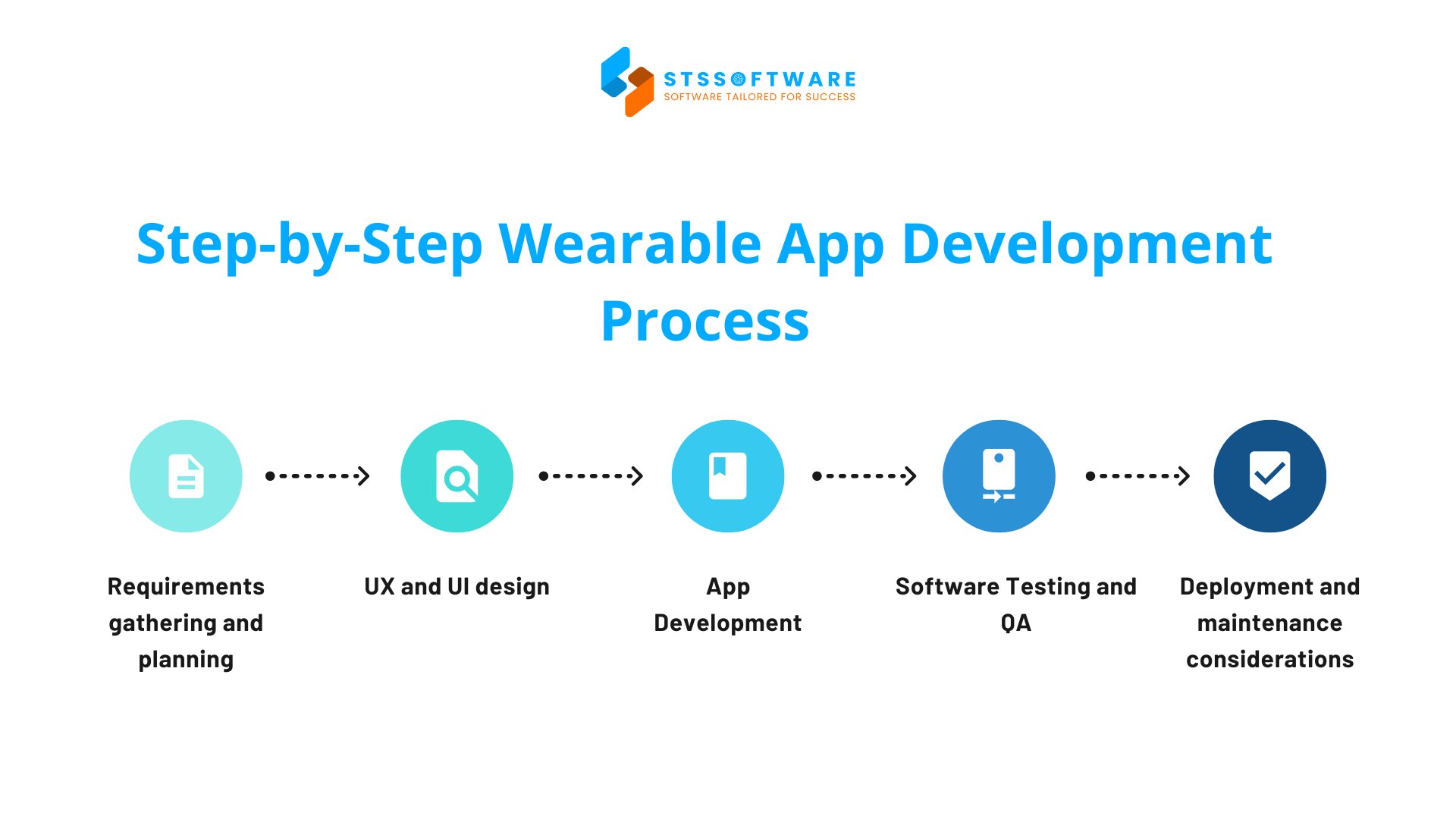
Developing a wearable app is more than just coding. It is the journey of ideation, design, deployment and maintenance. Each of these different stages plays an important role in making the sustainable app business as relevant to the final end user. Let STS Software walk you through the important steps in the wearable app development process.
Requirements gathering and planning
First, businesses need to clearly define the goals and target users of the wearable application.
Gathering requirements from users and experts helps build suitable features. For example, a fitness tracker app differs greatly from a VR-based solution in terms of structure and functionality. This step plays a crucial role in laying the groundwork for developing wearable apps.
UX and UI design
Next, the development team will design a prototype and build a user experience (UX).
Because the screen of a wearable device is very small, the design needs to be minimalistic but still ensure full information. Creating a prototype helps businesses easily visualize and test the operation flow early. This is an important step to improve wearable device app development from the beginning.
App Development
After that, the programmer will choose the appropriate framework to implement the feature.
WearOS, watchOS or Tizen all have their own set of tools and programming languages. Choosing the right platform and tools helps optimize performance and save costs. Wearable app development companies often have experience in choosing the right solution for each type of device.
Software Testing and QA
Next, the QA team conducts in-depth testing to ensure the application operates stably on wearable devices.
The testing phase covers sensor accuracy, sync efficiency, app responsiveness, and OS compatibility. In addition to functional testing, the team also tests the real-world experience when the user is on the move, wearing the device.
Deployment and maintenance considerations
After finalizing development, the app is made available on digital marketplaces such as the App Store and Google Play.
Once launched, businesses need to continue to maintain, update, and optimize performance. This helps the application stabilize and adapt to new device versions. In the field of wearable app development, maintenance is an indispensable part of maintaining long-term product quality.
Spotlight: Healthcare Wearable App Development
Wearable applications in the healthcare sector are opening up many innovative opportunities for the healthcare industry. The combination of smart wearable technology and medical data facilitates more effective patient monitoring. This represents a growing direction within healthcare-focused wearable app development.
Market potential and growth figures
According to some statistics, the value of the healthcare wearable sector could exceed $60 billion by 2025. COVID-19 has further fueled the need for remote healthcare solutions. This creates great leverage for businesses to invest in wearable application development in the healthcare industry.
Compliance with legal regulations
Next, healthcare apps should comply with various regulations such as HIPAA (USA) and GDPR (Europe) or FDA for anything related to medical devices. So, when developing a healthcare wearable app, businesses need to contact legal experts to ensure its validity and confidentiality.
Typical use cases
Besides, some of the most familiar cases of usage include heart rate monitoring, blood oxygen saturation (SpO2), Sleep Apnea detection, and reminders for medication. For example, an Apple Watch can send alarms when it detects an irregular heartbeat, helping identify possible cardiovascular conditions early.
Patient data handling and security
In addition, handling medical data requires a high level of security. The application needs end-to-end encryption and role-based access restrictions. This helps protect user privacy – a vital factor in developing wearable medical applications.
Healthcare integration
Finally, the application needs the ability to connect to a hospital management system (EMR/EHR) or a telemedicine platform. This will give room for synchronizing data, hence creating room for doctors to take accurate treatment decisions.
Key Obstacles In Wearable App Development And Strategies To Resolve Them
Wearable app development creates innumerable opportunity avenues but also many challenges. To build effective products, businesses need to understand technical and user barriers. Below are typical challenges developers face when building wearable apps and practical ways to address them:
Device fragmentation problem
First of all, the wearable market is very diverse with many different operating systems and screen sizes. This makes it difficult to optimize the application on all devices. To solve this, developers should use cross-platform frameworks such as Flutter or React Native. It’s also advisable to run tests across multiple actual device models.
Optimize battery life
Next, the battery is a major limiting factor of wearable devices. Background running applications are the cause of faster battery drain. The solution is to optimize data processing algorithms, use sensors sparingly and reduce unnecessary synchronization frequency.
Connectivity limitations
Besides, wearable devices do not always have a stable connection to smartphones or the internet. Therefore, the application needs to be designed to work offline as little as possible and sync when connected. This is an important requirement in wearable app development.
User barriers
On the other hand, some users have difficulty getting used to small interfaces or are not yet confident in wearable technology. To overcome this, businesses need to focus on a simple, easy-to-understand user experience. In addition, communication campaigns also play a role in raising awareness and building trust.
Testing complexity
Finally, testing wearable applications requires a separate process due to the limitations of hardware and operating systems of the devices. Simulations are not accurate enough, so testing on real devices is necessary as much as possible. Combining manual tests with automated processes helps deliver complete and reliable quality checks.
Cost Factors in Wearable App Development
The total cost of developing a wearable application depends on multiple core factors, such as app complexity and technology used. Therefore, businesses need to have a clear plan to effectively control their budget during the wearable device app development process.
Development team requirements
First, the development team greatly affects the cost. A basic project usually requires programmers, UI/UX designers, testers, and project managers. For healthcare or sensor integration applications, additional hardware experts or medical consultants are needed.
For example, a heart rate monitoring application via a watch like Withings Health Mate requires close coordination between software engineers and medical experts to ensure data accuracy.
Deployment time expectations
Next, the longer the development time, the higher the cost. Typically, creating the initial version of a wearable app requires between three to six months.. Projects integrating many advanced features can take up to 9–12 months.
For example, Fitbit spent more than 8 months developing an upgraded version that integrated more accurate stress and sleep tracking.
Development platform affects costs
In addition, the platform chosen also determines costs. Developing separately for each operating system such as WearOS, watchOS or Tizen will be more expensive than a multi-platform solution.
For example, if you build a fitness tracking app that works well on both the Samsung Galaxy Watch (Tizen) and Apple Watch (watchOS), the cost will be double that of developing for only one operating system.
Maintenance and update budget
After going live, allocating funds for ongoing maintenance is essential to keep the app running smoothly. Activities such as bug fixes, operating system updates, performance optimization… usually account for 15–20% of the annual budget.
For example, the MyFitnessPal app needs to update every year to be compatible with new watchOS versions and add features based on user feedback, which costs tens of thousands of dollars each year.
Future Trends in Wearable App Development
Technology trends are changing rapidly, creating new opportunities in wearable app development. Companies must stay updated with these trends to remain competitive and relevant.
Emerging technologies are impacting this field
Artificial Intelligence (AI), Machine Learning, and biosensors are gradually changing the way wearable apps work. For example, some new smartwatches can now detect early heart rhythm disorders or analyze stress indicators in real time thanks to AI.
Market forecast and growth opportunities
Next, forecasts show that the wearable app industry could surpass $100 billion in value by the year 2028. This is an opportunity for businesses to expand their products and attract users. For example, health insurance companies such as AIA have partnered with health measurement apps to offer preferential insurance packages based on daily activities.
New devices are emerging
In addition to watches and bracelets, the market is witnessing the emergence of new devices such as smart rings, sensor-integrated clothing, and skin-tight devices. For example, the Oura Ring – a ring that tracks sleep health and recovery levels – is popular with athletes and office workers.
Integration with IoT and smart home systems
Finally, wearables are increasingly connected to the IoT ecosystem. Users can control devices in the home through the watch or receive instant alerts from the sensor system.
For example, the Apple Watch can automatically open the garage door or adjust the air conditioner if connected to the HomeKit system.
Why Choose STS Software as Your Partner for Wearable App Development
That is to say, choosing the right team plays a vital role in ensuring the success of any wearable app development effort. STS Software is a reliable choice if you are looking for a professional and efficient healthcare software development company.
STS Software has in-depth expertise in wearable technology
First of all, we understand the specifics of wearable device app development, from hardware requirements to performance optimization. STS’s engineering team always updates the new trends to ensure solutions suitable for each platform.
We have implemented many successful wearable application projects
Secondly, STS Software has deployed many real products for customers in and outside the healthcare industry. Each product is built based on specific needs, focusing on user experience and operational efficiency.
We have comprehensive technical capabilities and strict processes
Thirdly, our development process includes all steps from analysis, design, and programming to testing and deployment. STS Software ensures that each stage is strictly controlled for quality and flexible according to the project.
We provide a complete development service, dedicated support
In addition, STS accompanies customers from the idea to the application goes into operation. We maintain technical support, upgrades, and updates as required, ensuring the system is always stable and suitable for market changes.
We are trusted and appreciated by customers
Most importantly, STS Software remains committed to delivering solutions that prioritize client satisfaction. Each project is a commitment to quality and efficiency, demonstrated through long-term commitment and positive feedback from partners.
Conclusion
In conclusion, wearable app development is opening up many opportunities for businesses in the digital age. From choosing a platform, optimizing performance, to ensuring security and user experience – every step requires a clear strategy and an experienced team.
If your business is considering implementing a wearable app, now is the right time to start. Defining goals, planning features, choosing the right platform are the first steps to take.
We at STS Software are ready to accompany you on your product development journey. With expertise in wearable app development and multi-industry experience, STS will help you build an effective, cost-effective and future-ready solution.
Reach out to STS Software now for expert guidance and find the best-fit solution tailored to your business goals.



